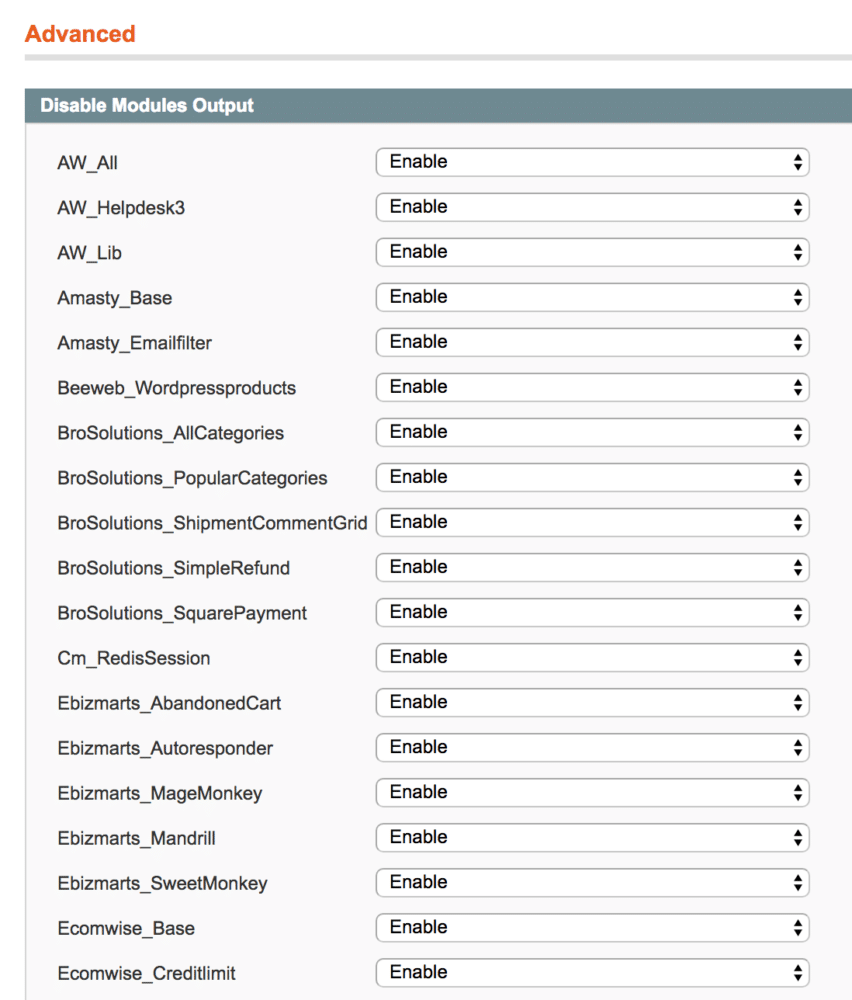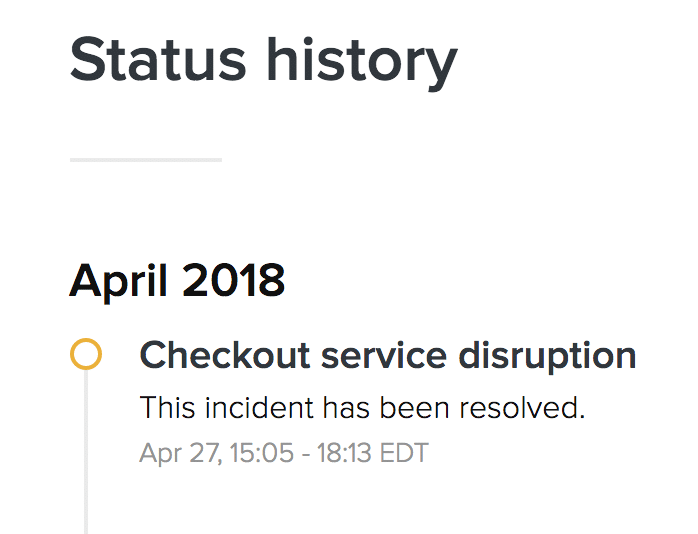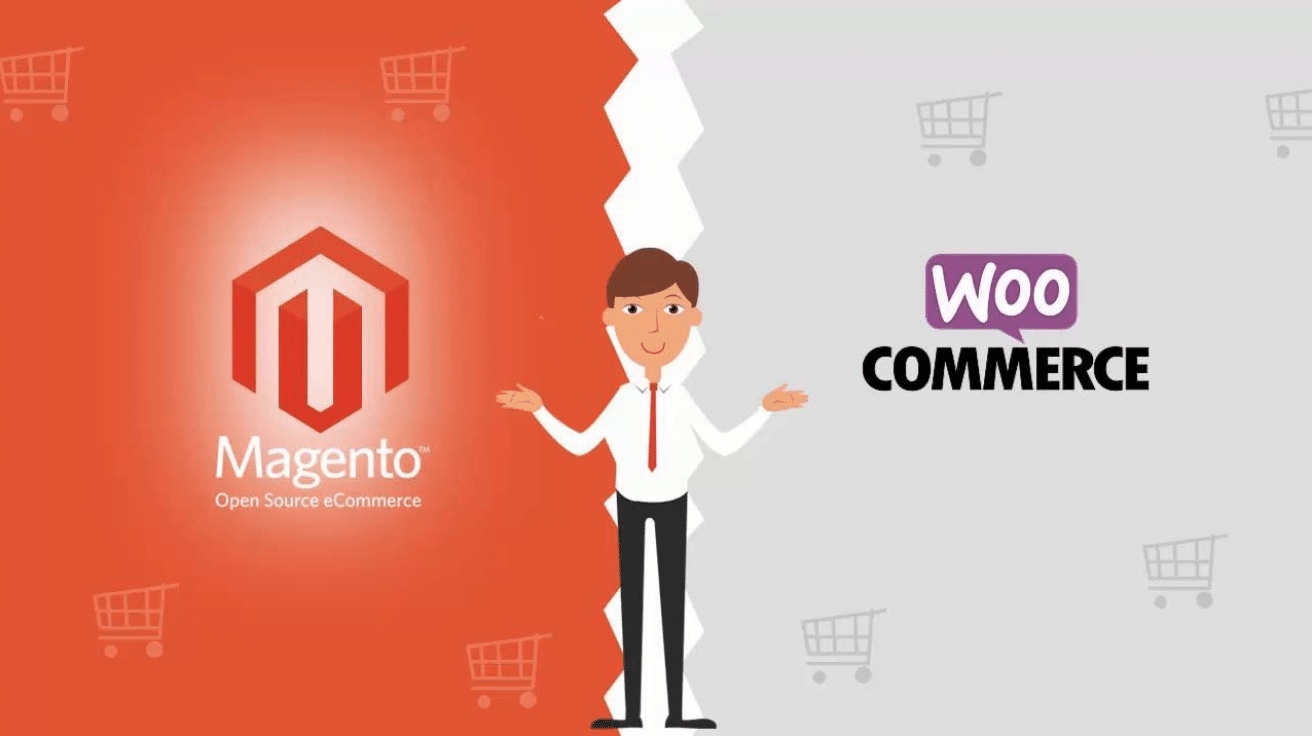Should you upgrade to Magento 2?
Magento 2 has better site speed and performance, enhanced visibility into business results, and better omnichannel commerce experiences.
That said, we know the decision to make such a major update to your online store is not an easy one. As Magento developers, we’ve done this countless times and understand the frustrations. But you don’t have to go it alone!
In this article, we’ll discuss the changes to Magento and the Magento migration process, as well as some alternatives to Magento that may be worth switching to instead of migrating to Magento 2.
Note: This is not a developer guide. This is to help you as a store owner with the Magento migration process. It’s written in plain English (no code jargon) for anyone to understand!
Here’s a quick navigation to jump right to the section you need:
- How to Prepare For a Magento Migration
- Step-By-Step Magento Migration Process
- Magento Alternatives to Consider
If you do decide to upgrade to Magento 2, we’ll help you prepare. If you’re considering migration from Magento to a different platform, however, click here to skip to the section on eCommerce platforms.
Magento 1 to Magento 2 Migration: How to Prepare
Upgrading your online store is a major undertaking. Preparing for the migration will give you the confidence and security you need to make this change.
Let’s walk through the steps you should take to prepare for your migration to Magento.
- Take an inventory of the functionalities on your current store you’d like to carry over. This includes your custom extensions, workflows, and integrations. In addition, make a list of the extensions that you’ll need to purchase again.
- Take note of the functions on your site that could be improved. This migration is a great time to make any improvements to your Magento store that you’ve been putting off. Are there any extensions from the Magento marketplace that you want to add to improve your online shopping experience? Write these down for future reference.
- Create a budget and timeline. Now that you’ve taken an inventory of your website, it’s time to figure out the execution. How much are you able to allocate towards this project? When is your target finish date? These are important details to talk through with your web development team.
- Find a web developer. Shop around for developers who are well-seasoned in the Magento program that can seamlessly make the transition. If you’d like to learn more about how we can help you make the transition from Magento 1 to 2, click here.
- Back-up the information on your website. Before diving into your website migration, take time to back-up all of the data on your website. In fact, when making the switch, we suggest creating a duplicate Magento 1 site to work with. The last thing you want is to botch something on your live site during the process.
Step-by-Step Magento Migration Process
Now that you’ve taken time to prepare, we’re going to walk through the steps for the actual migration. (This is simply to help you understand the process – we highly recommend hiring a Magento developer to help with the execution.)
Theme Migration
You have two options when it comes to Magento theme migration.
The first is to modify your existing theme so it is compatible with the Magento 2 standards. This is actually a full rebuild of your existing website. The Magento developer will take a look at your existing design and write the code to make it work for Magento 2.
The other option is to design and build a new theme entirely.
Unfortunately, migrating your Magento 1 theme without making modifications is not possible with the new updates. This is a good time to look at the theme you’re using for your site and figure out what improvements should be made.
Magento advises you not to purchase a theme and customize it. Instead, create a custom design and theme so that it is easier and cheaper to maintain your codebase. With a quality Magento development company, a redesign (or facelift) won’t increase your costs significantly.
Extension Migration
Like your site theme, your extensions for Magento 1 will no longer be compatible with Magento 2. It’s important to make a list of all of the extensions you’d like to carry over to your Magento 2 site.
To gather a list, you can look at your code in the folder: app/etc/modules. Everything not prefaced with Mage_* or Phoenix_Moneybookers.xml should be an extension. From the admin area you can go to System -> Configuration -> [Advanced panel] Advanced. It will give you the same list.
If you know what each of these extensions does, you can add this to your step 1 preparation, which will help your developer provide a more accurate quote. It looks like this:
Customizations
In some cases, the custom code in your Magento 1 store could be compatible with Magento 2. Magento has developed a Code Migration Toolkit that helps with this process. It will essentially take the layout and configuration files and adjust their structure to match Magento 2.
However, there will most likely be some improvements and changes you’ll have to make here and there. It should not be considered a “plug and play” process.
Next up, the data migration tool!
Magento Data Migration
Once you have the above items in place, the next step is to transport your products, customers, orders and other data to the new Magento store. Like we said, it’s important to backup all of this migrating data before starting the process to ensure you don’t accidentally lose any information.
Magento created the Magento 2 Data Migration Tool that helps make a smooth transition from one platform to the next (we totally recommend you install the data migration tool for an easier transition, as it even migrates settings for you).
If you want to try to do it yourself, there are a lot of step-by-step guides out there to reference, but Magento has a pretty steep learning curve. We advise you to be sure you use a developer or a team who really understands Magento. In the end, you will save a lot of time and money.
Consider Magento Alternatives: Shopify & WooCommerce
Migrating data from Magento 1 to Magento 2 is no small task.
If you’re going to put all the time and energy into migrating anyway, now is a great time to consider your options. Magento may not be the best eCommerce platform for you anymore.
Specifically, Shopify or WooCommerce may be better options.
Shopify
Shopify has become a major player in the eCommerce world in the last 10 years!
It makes sense – their platform is intuitive and easy to use.
However, Shopify has a lot of downsides. The code is hosted elsewhere, so your access is limited. The system is down a lot (see the image below). Your ability to customize is limited. You will also pay a recurring fee to use their system.
Unless you want to do it all yourself, we generally just push people away from Shopify.
WooCommerce
WooCommerce is a plugin for the WordPress content management system. It’s a viable alternative for stores that focus more on content than products.
WooCommerce allows a store owner to upload products and add basic information to them. It also offers a handful of shipping and payment methods.
When we talk about WooCommerce, we have to point out the downside of scalability. As you add more plugins, you add more daily upgrades, a risk of conflicts between the custom code in each, reliance on multiple vendors to maintain their code, and security risks.
When you talk to a developer that understands both Magento and WordPress, you can better understand which tools are right for you after giving more information about your specific store’s needs and long-term goals.
Conclusion
Migrating from Magento 1 to Magento 2 can be a big undertaking. To recap, let’s take a look at the benefits and drawbacks of upgrading to Magento 2.
Here are the benefits of switching over:
- The platform is constantly improving technology and feature implementation
- Magento 2 boasts a significantly improved codebase
- A much faster program than its predecessor
- Improved email automation features
- More detailed and advanced reporting
- A better content management and email setup
Here are the challenges of migrating your online store to Magento 2:
- Magento can be costly because it requires more skilled developers
- Upgrading to Magento 2 is a full rebuild, which is a lengthy (and expensive) process
- Maintaining your store can also be costly as new releases require code updates every 1.5 – 2 years, based on Magento’s release cycle
You are up for a sizable financial investment. Do your due diligence. It’s as good of a time as any to consider other options entirely outside of Magento. Does the size and need for scalability of your website warrant Magento?
If not, Shopify and WooCommerce are viable alternatives for smaller stores that don’t require a lot of custom features. Other platforms are designed with smaller stores in mind.
WordPress using WooCommerce can also be a good option because of the ease of adding plugins, backward compatibility on upgrades, and lower development costs. But before you jump on the option because of lower costs, just consider the need for more secure (costly) website hosting, daily upgrades to plugins and the limited scalability as you want to add features to your store.
Magento is a powerful program, but it’s important to consider what makes the most sense for your business. As long as you follow the helpful tips we’ve provided, you’ll have a successful migration!
Not sure what to do? Click here to contact us and get a free consultation.



